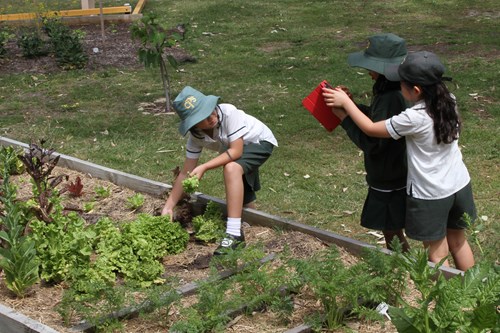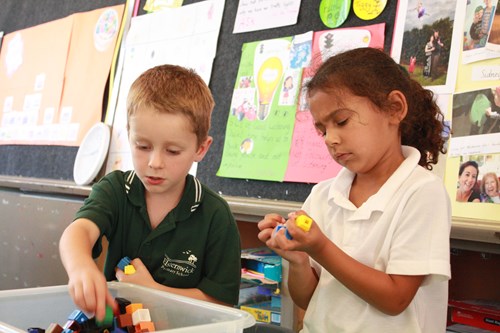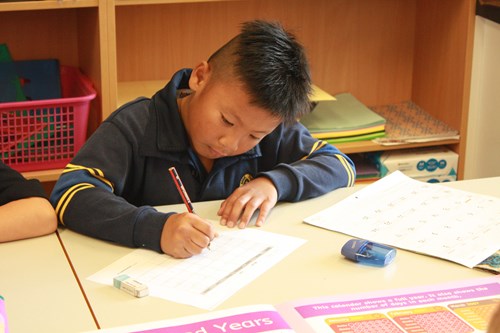The Office of the eSafety Commissioner works to keep Australians safer online by providing resources, programs and services that promote positive online behaviour.
In its 2018 State of Play: Youth, Kids and Digital Dangers report, the Commission identified that young people were exposed to a wide range of issues online from unwanted contact to bullying and dealt with these issues in a number of ways. They told the Commission that while negative experiences could be hurtful, they also found positive outcomes from these experiences in terms of increased awareness of online risks and ways of dealing with issues when they arise.
By using resources provided by the Office of the eSafety Commissioner teachers can encourage students to reflect on their personal skills and empower students to manage digital risks and negative online experiences.
A comprehensive approach to teaching online safety should focus on real issues young people face, covering respectful online relationships, eSecurity, privacy and personal information, balancing time online, cyberbullying and bystander behaviour, and accessing support.
The descriptions below provide advice and ideas on aligning online safety to the Australian Curriculum learning areas and general capabilities. The activity ideas complement the Commission’s resources listed at the end of this article.
Respectful online relationships
Learning areas: English, HPE, Science, HASS
General capabilities: ICT, Personal and Social, Ethical Understanding, Intercultural Understanding
Students’ online relationships can be informed by the social and emotional skills they learn in a school context. It is also important to impart and reinforce skills that will lead to healthy online behaviour. Practising digital relationship skills in school-based learning helps young people develop healthy online relationships by understanding consent in online interactions, showing resilience in bouncing back from negative experiences, and building a capacity to support others who need help. Teaching these skills provides an evidence-based framework for protection from cyberbullying and psychological injury.

Teachers can help students develop online relationship skills by:
- looking at popular culture on social media and asking students to identify respectful online communication
- role-playing with students on how to take responsibility in online situations. This might be through supporting others who are being targeted with negative comments or finding safe ways to speak out about offensive or harmful online content or behaviours.
- using real-life online discussions of topical events (for example, weather, sports) to start conversations about resilience; for example, identifying strengths, skills and coping strategies.
eSecurity
Learning areas: English, HPE, Digital Technologies
General capabilities: ICT, Personal and Social, Ethical Understanding, Intercultural Understanding
Smartphones, tablets, wearables and connected devices store information, allow calls and messaging, and provide 24-hour internet access from just about anywhere. With so much personal information stored on devices’ apps, email accounts and contacts, it is important to secure all types of devices and protect information.
Teachers can help students protect their information by:
- asking students to come up with their own device security habits; for example, when they will use passcodes or two-factor authentication
- creating ‘how-to’ videos to show how to set up your device so that your information is protected
- working in groups to role-play how they would feel and the actions they would take if they lost their device.
Privacy and personal information
Learning areas: English, HPE, Digital Technologies
General capabilities: ICT, Personal and Social, Ethical Understanding

Smartphones, tablets, wearables and connected devices store information, allow calls and messaging, and provide 24-hour internet access from just about anywhere. With so much personal information stored on devices’ apps, email accounts and contacts, it is important to secure all types of devices and protect information.
Teachers can help students protect their information by:
- asking students to come up with their own device security habits; for example, when they will use passcodes or two-factor authentication
- creating ‘how-to’ videos to show how to set up your device so that your information is protected
- working in groups to role-play how they would feel and the actions they would take if they lost their device.
Balancing time online
Learning areas: HPE, Science, Mathematics, The Arts
General capabilities: Personal and Social, ICT
With more and more mobile devices on the market, it is easy and tempting to stay connected 24 hours a day, seven days a week, but it is also very important for students to know how and when to disconnect. Spending excessive amounts of time online can have significant impacts on health, family and social life, as well as on academic performance at school.
Teachers can help students balance time online by:
- using heart rate monitor apps to measure heart rate and discuss the physical and psychological impacts of spending time online
- getting students to graph what is important to them and, using their own device data, to show how much time they spend on things they really care about
- providing opportunities for students to engage with nature and discuss their experiences, or asking students to come up with a viral video campaign to promote a range of fun offline activities.
Cyberbullying and bystander behaviour
Learning areas: English, HPE, HASS
General capabilities: ICT, Personal and Social, Ethical Understanding, Intercultural Understanding
Cyberbullying is the use of technology to bully a person or a group with the intent to hurt them socially, psychologically or even physically. One in five Australian children between the age of 8 and 17 have experienced cyberbullying. Cyberbullying is often an extension of bullying that is happening at school, and in the online environment the impact can be more severe. Cyberbullying is often hard to escape, it can be persistent enough to have serious effects on a young person’s wellbeing. Research shows that social and emotional skill development and the actions of bystanders can have a major impact.
Teachers can help students understand cyberbullying and promote helpful bystander behaviour by:
- getting students to read/write fictional stories to describe how people bully others and how those who are bullied feel
- working in groups to classify behaviours that would feel supportive/unsupportive if students were being cyberbullied
- using scenarios to practise the process of reporting cyberbullying, including collecting evidence, explaining the impact of bullying and the steps involved in reporting.
Encouraging help-seeking behaviour
Learning areas: HPE
General capabilities: ICT, Personal and Social, Ethical Understanding
Although encouraging help-seeking behaviours can be difficult, getting the right support can be beneficial in the long run. It is important that students know who can provide support for online safety issues such as friends and family, reporting tools that help flag and remove content, and trained professionals who can provide strategies and resources.
Teachers can help students become active help-seekers by:
- providing information sessions for students to understand the process of reporting cyberbullying, illegal content and scams
- involving students in planning and promoting school-based cyberbullying reporting policies
- buddying older students with younger students to help promote reporting and accessing support, including anonymous counselling services.
eSafety Commissioner resources for primary schools
 The Office of the eSafety Commissioner provides resources that cover a range of online safety and respect topics. The resources include video, activities and supporting materials, and can be used as conversation starters, short lessons or used combined to provide a comprehensive unit of work.
The Office of the eSafety Commissioner provides resources that cover a range of online safety and respect topics. The resources include video, activities and supporting materials, and can be used as conversation starters, short lessons or used combined to provide a comprehensive unit of work.
 #GameOn is a cybersafety video that follows the online experiences of a group of lower secondary students who find themselves in situations that catch them off-guard and teach them the consequences of making poor decisions online. The program provides teachers with engaging resources to explore the online safety issues raised by students. The resources are designed so that teachers can learn more about their students’ use of digital technology and online behaviour. The unit covers a range of online safety topics including cyberbullying, excessive gaming, sharing passwords, free downloads and online friends.
#GameOn is a cybersafety video that follows the online experiences of a group of lower secondary students who find themselves in situations that catch them off-guard and teach them the consequences of making poor decisions online. The program provides teachers with engaging resources to explore the online safety issues raised by students. The resources are designed so that teachers can learn more about their students’ use of digital technology and online behaviour. The unit covers a range of online safety topics including cyberbullying, excessive gaming, sharing passwords, free downloads and online friends.
Live virtual classrooms
 Students can participate in a free, live interactive eSafety workshop with one of our expert trainers. Using webinar learning, virtual classrooms allow an outreach trainer to work with many schools, even in remote areas. Each session provides up-to-date online safety knowledge and an opportunity to apply digital skills to real world dilemmas.
Students can participate in a free, live interactive eSafety workshop with one of our expert trainers. Using webinar learning, virtual classrooms allow an outreach trainer to work with many schools, even in remote areas. Each session provides up-to-date online safety knowledge and an opportunity to apply digital skills to real world dilemmas.
Further information
The Office of the eSafety Commisioner has a range of K–6 evidenced-based resources to assist schools in their delivery of online safety. Click here for a full list.
Safety and Respect Online is an accredited professional learning program consisting of three one-hour live webinars. Participants engage with an e-safety expert and complete an online quiz.
Subscribe to eSafety to stay up to date with online issues, new resources and the latest research.
Leaders and teachers from St Augustine’s Parish School in Adelaide have been developing integrated curriculum units through a joint project with ACARA, the South Australian Catholic Education Office and the South Australian Department for Education. Nine schools in South Australia were involved in the project, which focused on designing learning with the SA Keeping Safe: Child Protection curriculum within the learning areas of the Australian Curriculum and through the development of one or more of the general capabilities.
The Child Protection Team, consisting of the deputy principal and year level leaders, participated in the project where they collaboratively planned, peer-mediated, taught, assessed and moderated an integrated unit of learning.
Whilst participating in the series of three workshops along with leaders and teachers from other schools in South Australia, the leaders from St Augustine’s Parish School developed their learning at two levels. First, they worked together to design, teach and assess rich units of learning for students in their own classes. As part of the process, the deputy and year level leaders then provided professional learning as well as time, space and expertise for collaborative planning for all teachers in their year level teams.
 This targeted and intentional process means that all students in all classes have already benefitted from well-designed learning opportunities, which brought together the mandatory learning from the Keeping Safe: Child Protection curriculum within the context of their learning in areas such as HPE, English, Technologies and The Arts.
This targeted and intentional process means that all students in all classes have already benefitted from well-designed learning opportunities, which brought together the mandatory learning from the Keeping Safe: Child Protection curriculum within the context of their learning in areas such as HPE, English, Technologies and The Arts.
“I focused on The Arts as well as Health and PE … getting the children to form their own role plays and dramatisations. It was really obvious to see the personal and social capability, critical and creative thinking skills develop as they worked collaboratively to plan and perform.”
Year 3 teacher
In some classes, students use their learning and skill development in Drama to explore aspects of the South Australian Keeping Safe: Child Protection Curriculum such as how to recognise and report abuse, and strategies for keeping themselves safe. They have developed their personal and social capabilities in the areas of self-management and self-awareness.
Other students combine learning from Health and PE and Technologies learning areas to learn about online safety, as well as developing personal and social and ICT skills using the general capability continuums.
St Augustine’s Parish School continues with this focus on using the Australian Curriculum learning areas and general capabilities to ensure that all students are deepening their learning in the area of child safety.
 “The capability continuum that we used was really helpful because we could see where our students were on that continuum, what we needed to go back too and what we needed to focus on, … what we would need to modify or adapt to suit all students. Having a lot of different abilities, different interests it was the continuum that helped us to actually pinpoint where each student was at and where to go next to move them forward.”
“The capability continuum that we used was really helpful because we could see where our students were on that continuum, what we needed to go back too and what we needed to focus on, … what we would need to modify or adapt to suit all students. Having a lot of different abilities, different interests it was the continuum that helped us to actually pinpoint where each student was at and where to go next to move them forward.”
Year 5 teacher

Gez Mulvahil, Principal
Sacred Heart Catholic Primary School in Woodroffe, Northern Territory, is located on a very busy road. With a number of near-misses on the school crossing, the student leaders decided to gather data and write to the council to address their concerns.
Gathering data
With the support of their teacher, students monitored the school crossing for 25 minutes each day for a week, before the school day began. They collected and collated the data over the week:
|
Vehicles |
26 Feb. |
27 Feb. |
28 Feb. |
1 March |
2 March |
Total |
|
Cars |
258 |
175 |
346 |
360 |
372 |
1511 |
|
Buses |
5 |
5 |
7 |
8 |
7 |
32 |
|
Trucks |
0 |
0 |
1 |
0 |
3 |
4 |
|
Illegal parking |
4 |
23 |
15 |
20 |
8 |
70 |
What’s next?
The students then wrote to Palmerston Council, requesting that traffic management strategies be implemented to make the school and the crossing safer places each morning. A few weeks later, the council placed a temporary “Slow down” electronic sign before the crossing. The feedback from the crossing guard and the students was that this had a significant impact on slowing down the traffic in the area. The student leaders then wrote to the council again, requesting permanent signage.
Just recently, the students met with the mayor of Palmerston and raised their concerns about the traffic flow and again requested that council look at options to address these safety concerns. The mayor assured the students that she would follow up with the council.
Meeting the mayor and addressing their concerns in a formal meeting raised the awareness of the steps that needed to be taken in problem-solving.
Curriculum content
This example of how students have incorporated curriculum into ‘real life’ is a positive way to have students realise how they can take action to make a difference. The range of curriculum areas integrated into generating solutions for a real-life problem included: Digital Technologies, Civics and Citizenship, Health, Mathematics, Personal and Social Capability, Critical and Creative Thinking Capability, Literacy and Numeracy.
We are immensely proud of our student leaders who took it upon themselves to devise a plan to address the safety concerns at the crossing and follow through.
We are hopeful that we will soon have the installation of some traffic calming signs and continue to ensure our students arrive and depart safely.

Subscribe
Like what you see? Subscribe to receive Primary Matters four times a year to your inbox or email story suggestions and feedback to ACARA-PrimaryMatters@acara.edu.au.



